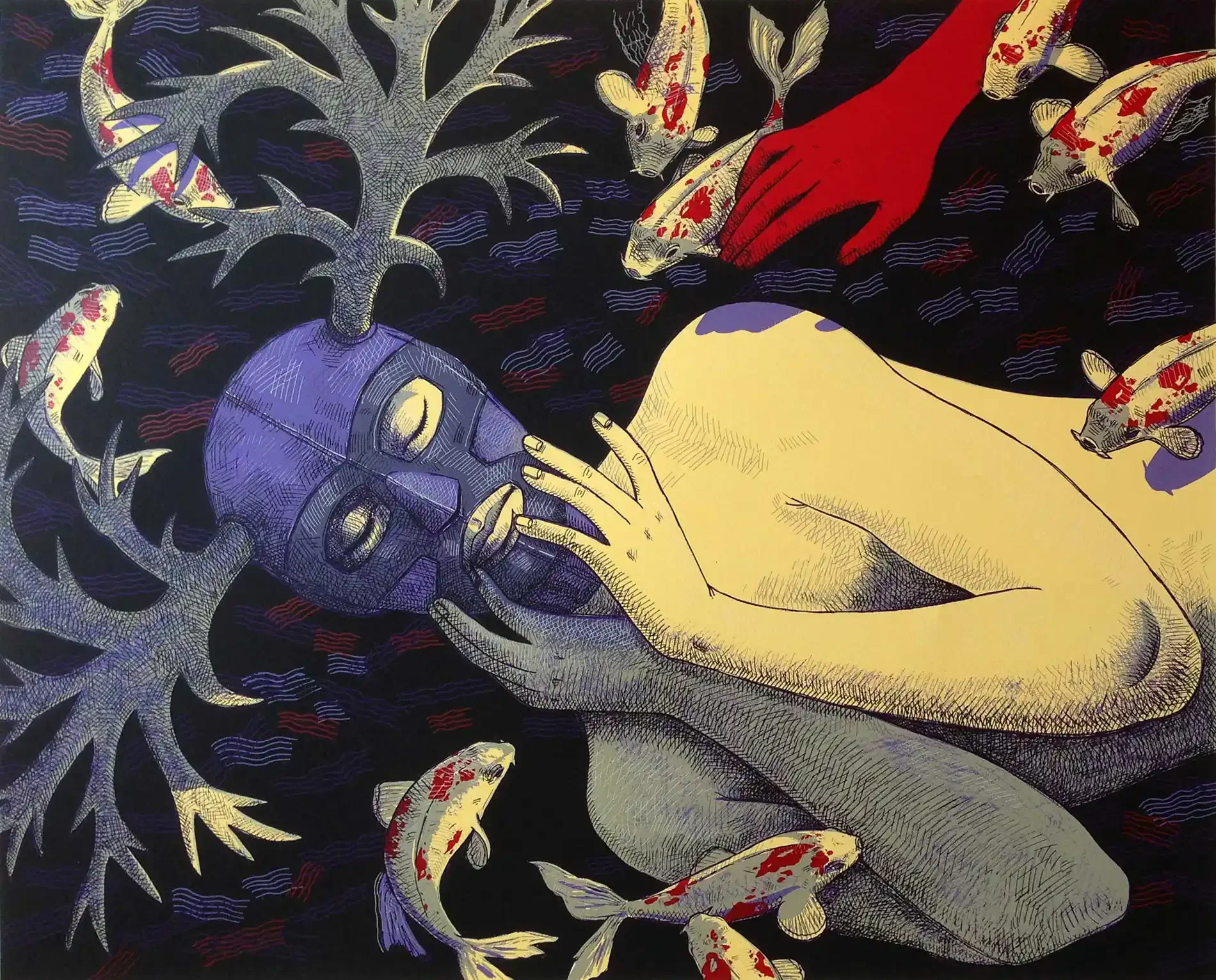Judithe Hernández - prints and biography
Judithe Hernández
Biography
Judithe Hernández (b. 1948, Los Angeles) is a pioneering Chicana artist and a central figure in the Chicano Art and Los Angeles Mural movements. She first gained recognition in the 1970s as a muralist, using public art to address cultural identity, social justice, and community history at a time when these themes were rarely represented in mainstream American art.
In 1974, Hernández broke ground by becoming the only woman invited to join Los Four, the influential East Los Angeles collective that included Gilbert Luján, Carlos Almaraz, Frank Romero, and Roberto de la Rocha. With her involvement, Hernández not only expanded the group’s creative vision but also made a lasting impact as one of the few women at the forefront of the early Chicano movement.
Her career has since encompassed a broad range of media, from large-scale murals to pastels and mixed-media works on paper. Hernández’s imagery often incorporates surreal and allegorical elements, blending indigenous symbols, feminist themes, and contemporary concerns into a distinctive visual language. Through this synthesis, she has continued to engage issues of identity, gender, and social struggle while affirming cultural resilience.
Hernández’s contributions to American art have been widely recognized. In 2011, she was prominently featured in Pacific Standard Time: Los Angeles Art, 1945–1980, the Getty Foundation’s landmark initiative celebrating postwar Southern California art. Her work appeared in multiple exhibitions across the city and in a related public television documentary. She was also included in the Los Angeles County Museum of Art’s installation on the city’s mural legacy.
In 2012, she contributed to the launch of the América Tropical Interpretive Center, honoring David Alfaro Siqueiros and his monumental mural in Los Angeles. More recently, she has received significant recognition, including the prestigious City of Los Angeles Individual Artist Fellowship (C.O.L.A.) in 2013.
Today, Hernández’s work is held in major collections and continues to affirm her role as a vital voice in contemporary American and Chicano art.

